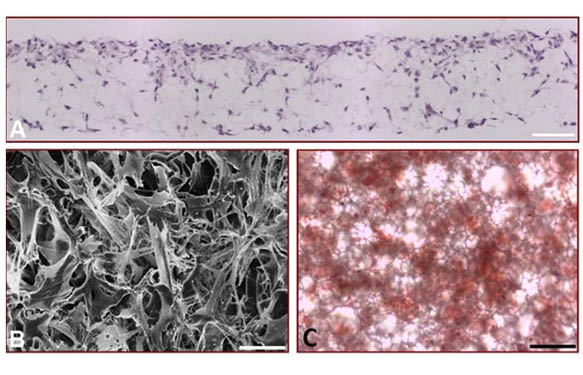Three papers on the role of the TGF-beta pathway in different cancers have recently been published.
It was already known that this pathway is involved in processes such as cell growth, cell differentiation, apoptosis, cellular homeostasis and other cellular functions. The pathway as such works in quite a simple way:
- TGF-beta superfamily ligands bind to a type II receptor
- The receptor recruits and phosphorylates a type I receptor

Immunoperoxidase of monoclonal antibody to SMAD2 on formalin-fixed paraffin-embedded human placenta. [antibody concentration 3 ug/ml] (Cat. No. #157H00004087-M01). - The type I receptor then phosphorylates receptor-regulated SMADs (R-SMADs)
- R-SMADs then bind coSMAD SMAD4
- The R-SMAD / coSMAD complex then accumulates in the nucleus
- In the nucleus, they act as transcription factors and regulate target gene expression
The fact that the pathway is simple does not mean it is not regulated. In fact, it is one of the most heavily regulated pathways in the cell, since it is involved in a wide variety of processes. Regulation includes agonists, antagonists, phosphorylations, and even ubiquitinations.
In the articles that have been recently published, for example, the role of ITGBL1 (an upstream effector of TGF-beta signaling pathway) in breast cancer is elucidated (1). Colon carcinogenesis is more related to genetic mutations in the TGF-beta pathway (2). Finally, tumour progression seems to be controlled by HOXB7, that in fact activates the TGF-beta pathway (3).
In general, for studies involving signaling pathways, one can either use validated antibodies to see the differential changes by means of WB and/or IHC, or one can study the whole pathway, in a simple manner, by using antibody arrays.
The choice between one method and the other will largely depend on the prior knowledge of the role of th e signaling pathway in the experimental model, as well as on what type of data one would like to obtain. For example, if you want to see / validate what has already been described, then using techniques such as WB, IHC or even phospho-ELISAs are recommended.
e signaling pathway in the experimental model, as well as on what type of data one would like to obtain. For example, if you want to see / validate what has already been described, then using techniques such as WB, IHC or even phospho-ELISAs are recommended.
However, if you want to study the mechanism of action of a new / repositioned drug, or you want to discover novel biomarkers related to signaling pathways, then antibody arrays are the answer to that type of question.
References
1.- Li, X.-Q., et.al. (2015). Cancer Research. DOI:10.1158/0008-5472.CAN-15-0240.
2.- Oshima H., et. al. (2015). Cancer Research. DOI:10.1158/0008-5472.CAN-14-2036.
3.- Liu, S., et.al. (2015). Cancer Research. 10.1158/0008-5472.CAN-14-3100.



